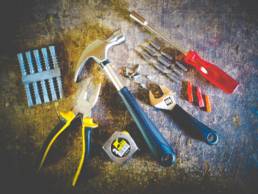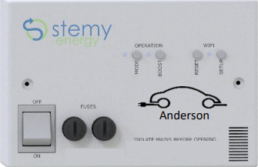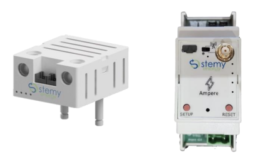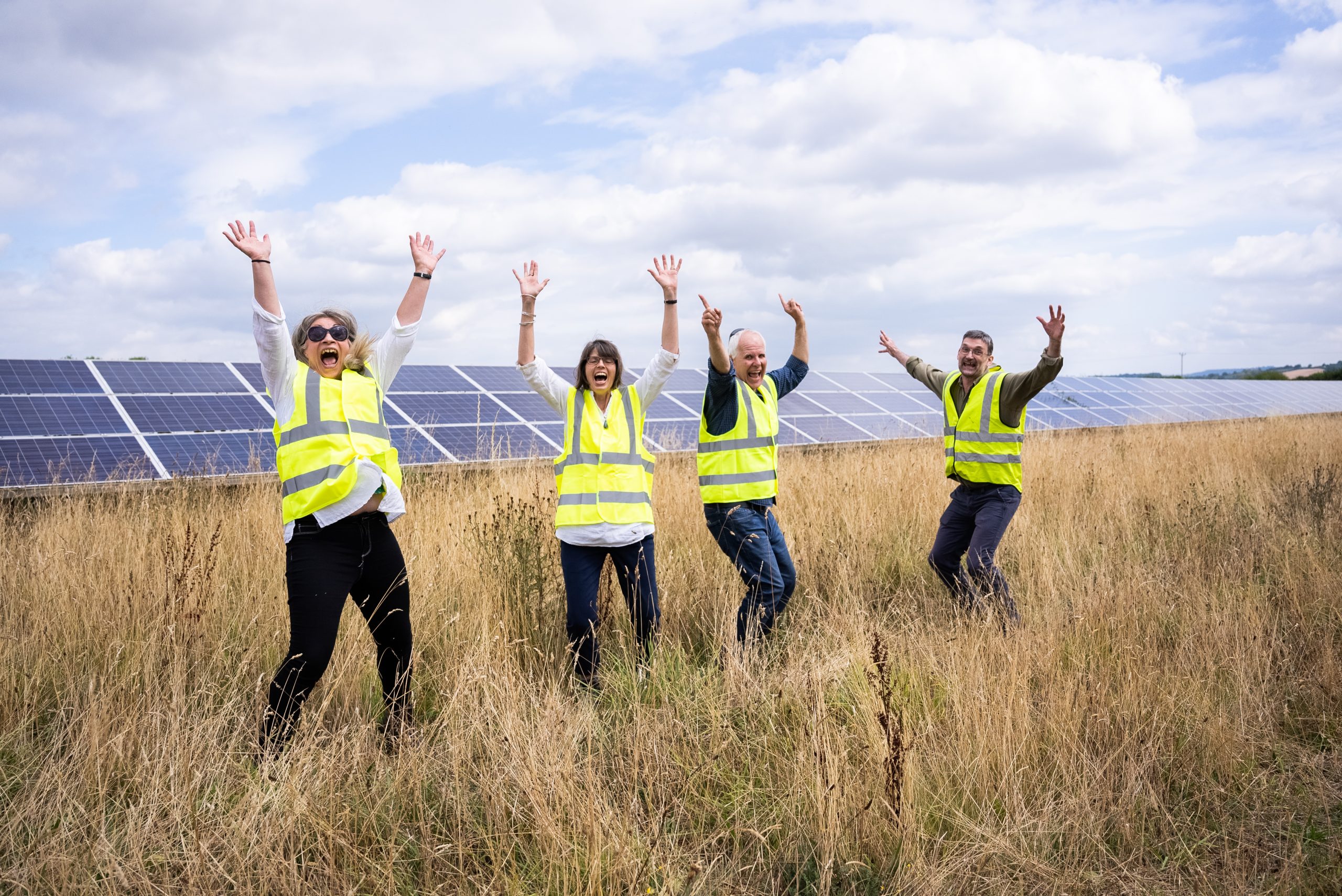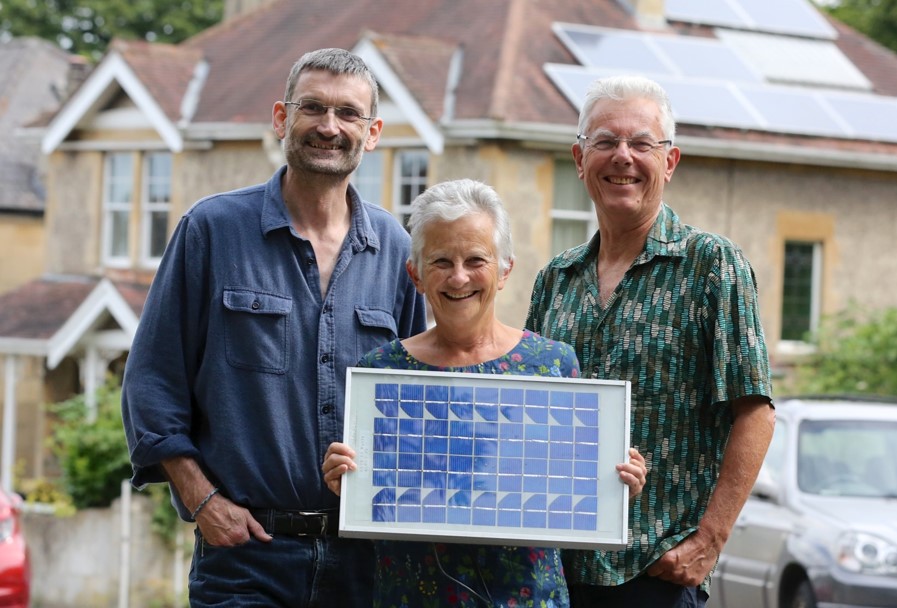Flex Toolkit - Customer Journey
Pre-Portal
1. Complete an expression of interest.
2. Attend an information session. These are run either face-to-face or online via Zoom. They are small and informal with ample opportunities to ask questions. If the householder has an existing energy technology we can check compatibility with our smart devices.
3. Receive an invite to access the Flex Community™ Portal plus guidelines on how to use the Portal.
Portal
4. Set up an account on the Portal
5. Upload information to build up a comprehensive smart energy profile.
6. Complete a Plan on the Portal
7. Depending on what Plan the householder applies for they are taken through the pre-installation arrangements (e.g. receiving quotes, selecting installers, assessment visits).
Installation
8. Once they have arranged an installation date they go outside the Portal to complete their installation and make contractual arrangements with the installer.
Flexibility
9. Once all the equipment is installed, they are taken through the process of providing flexibility to the electricity grid.
Stage 1: A period of time when Flex Community™ builds up a profile of your usual electricity use with regard to the specific energy technology (Manual Mode)
Stage 2: A period of time when Flex Community™ optimises your use of the energy technology based on your preferences and other factors e.g. presence of solar pv or a Time of Use Tariff. (Automatic Mode without Flex)
Stage 3: A period of time when Flex Community™ simulates flexibility requests from the Distribution System Operator (DSO), the body responsible for distributing and managing electricity from the generation sources to the final consumers. In our area the DSO is Western Power Distribution (WPD) (Automatic Mode with Flex)
10. They receive payments for providing flexibility to the grid:
In some areas the grid operator already makes use of flexibility services, and payments are received from them via Flex Community™ . We expect this to become more common as more renewable energy is installed on the grid.
See a more detailed version of the Customer Journey we used at the link below:
Flex Toolkit - Key Messages
Introduction
In order to explain Flex Community™ to potential participants we needed to provide some context to the project and explain why we were doing it. The concept of household electricity flexibility can be a difficult one to get across because it requires a basic understanding of the energy system and its future trajectory. We learned that it was important to raise awareness around the energy system in general before we could recruit participations to Flex Community™ .
Here are some of the key messages we have used to explain the background to Flex Community™ .
Once you have read through them you can see how we have used them in practice (e.g. on web pages, videos, presentations) by clicking on Engagement Tools at the bottom of the page.
We are going through an Energy Transition
Our energy system is in the middle of a major transition as we respond to the unfolding climate emergency. This transition involves:
- Switching over from fossil fuels to renewables with regard to energy generation.
- Switching from oil and gas to electricity as a means of heating homes and powering transport.
For this transition to be successful a number of problems need to be solved
1. Intermittency
We need to generate more renewable energy but renewable sources such as solar and wind are intermittent (weather dependent) and cannot always be guaranteed to meet demand.
2. Increased pressure on the electricity grid
Switching from oil or gas to electric transport and electric home heating will put more pressure on our electricity grid.
3. Decentralisation = harder to control
The switch to renewables is creating a more decentralised energy system with a high number of diverse and dispersed renewable energy generators rather than a small number of large, more easily controlled fossil fuel generators. This makes it harder to turn generation up or down when required.
4. Peak time = peak carbon
Just like with traffic, the electricity grid has its own rush hour. The demand peaks at around 6pm as people get back home from work, which unfortunately doesn’t always match when renewables, particularly solar, are at their strongest. Shortfall in renewable energy during this time is currently met by turning up energy from gas or oil fired power plants. So, if someone drives home in their electric vehicle and plugs it in to charge at 6pm, the odds are it’s adding to the need for fossil fuels. Currently energy consumed in the evening peak significantly more carbon intensive (up to 50% more) than other times of the day.
Energy demand management is necessary
We need to find better ways of managing energy demand in order to:
- Better balance supply from intermittent renewables and reduce our reliance on fossil fuels
- Avoid costly, resource intensive and environmentally unfriendly upgrades to our electricity transmission infrastructure
There are a number of methods we can use to manage demand but none of them is perfect.
1. Behaviour change
Changing the way we use energy both in how much we use and when we use it.
But how can we make it predictable and scalable to have the maximum collective impact?
2. Battery storage
Storing energy from renewables so it can be used when required.
But there are issues about the extraction of natural resources to manufacture batteries and the environmental impact of their de-commissioning.
3. Pricing mechanisms
Making electricity more expensive at peak times and reducing off peak costs.
However, this may not suit some people’s circumstances (e.g. families with young children).
4. Smart technology
Digital devices to enable people to collectively shift their energy consumption patterns.
But can we overcome the technological and psychological barriers to the adoption of smart technology that ‘makes decisions for us’?
Our way forward
- We’ll need a mix of solutions. We need to explore how we can best integrate the different methods to the greatest effect.
- And we need to ask who owns, who controls and who benefits? BWCE are committed to developing community owned and controlled solutions that bring real benefits to householders and local communities.
- As consumers we all need to become flexible energy users. Flexibility is the ability to modify energy consumption patterns in response to an external signal (such as a change in price, or a message) to provide a service with the energy system.
The potential benefits of our Flex Community™ approach
1. It will utilise digital technology to enable householders to make the optimum use of their energy technologies
This will ultimately improve energy efficiency, reduce energy bills and cut carbon emissions.
2. Flexibility will help us to increase renewable energy generation
If we can better match household demand to when there is more renewable electricity being supplied and do this in a controlled, predictable way, we make the grid operators more confident in allowing more renewable generation onto the grid.
3. It will help to avoid costly and resource intensive electricity grid upgrades
This is a simple, low-cost approach that will avoid costly grid upgrades which have high environmental impacts.
See how we have used these messages in practice in the Engagement Tools section.
Flex Toolkit - The Portal
Introduction
The Flex Community™ Portal developed by Stemy Energy in collaboration with BWCE is the website which enables householders and installers to join and participate inFlex Community™ .
The Flex Community™ Portal enables householders to:
- Upload information on their energy use to build up a comprehensive smart energy profile.
- Apply to install Stemy smart devices to enable a compatible energy technology already installed to provide flexibility to the electricity grid.
- Apply to install new energy technology (e.g. heat pump, EV charge post) PLUS Stemy smart devices enabling them to provide flexibility to the electricity grid.
- Arrange site surveys with potential installers and choose which one they wish to proceed to installation with.
- Arrange an installation date.
Once they have arranged an installation date (5) they go outside the Portal to complete their installation and make the necessary contractual arrangements with the installer.
The Flex Community™ Portal went through several versions based on Stemy software design and feedback from BWCE staff, Flex Community™ users and external organisations. These are the key elements of the Portal that resulted from this development process.
Key elements of the Portal for householders
Registration
- Householders register on the Portal to create their unique password-protected account.
- By registering, they agree to the Terms and Conditions of use with the associated Privacy Policy.
- They receive an email from Flex Community™ confirming their successful account set-up.
Welcome page
A Portal Welcome Page provides the following information:
- A list of the user’s current Plans (a Plan is a combination of energy technology PLUS smart device to enable the energy technology to communicate with the Stemy platform to offer flexibility).
- Information on how to navigate the Portal
- Details of how the Portal works
- In case users need help there is a link to Frequently Asked Questions. and an email to contact Stemy Energy.
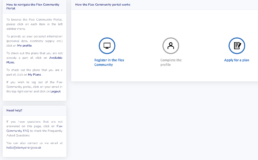
User Profile
Users are required to complete a series of short questionnaires to build up their smart energy profile.
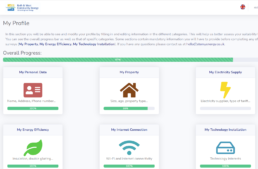
Information required:
- Personal data.
- Property – age, size in square metres (all floors), photos of property, fuse box and electricity meter.
- Electricity supply – supplier and tariff.
- Energy efficiency measures – cavity wall and loft insulation, double glazing plus a photograph of their Energy Performance Certificate (EPC) if available.
- Internet connection.
- Existing technology installation(s).
This information is used to:
- Assess technical eligibility for the different Plans on offer.
- Ensure that there is a baseline of information to determine whether flexibility services can be provided.
- Provide installers with householder details if and when they are asked to provide a quote for the installation of an energy technology.
A progress bar details the percentage of information that has been provided as users work through the questions.
Completion of all questions in this section are required before users can proceed to the next step.
Plans
A Plan is a combination of energy technology PLUS smart device to enable the energy technology to communicate with the Stemy platform to offer flexibility.
Householders are asked to go to Available Plans and then choose one or more of the Plans to apply for. They can apply for as many plans as are appropriate to their circumstances and interests.
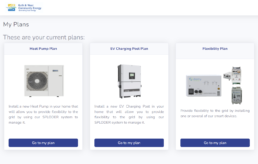
If they already have compatible energy technology
They need to complete a Flexibility Plan to arrange to install smart devices (no cost) to enable them to provide flexibility from this technology to the electricity grid.
If they want to install new energy technology (e.g. heat pump, EV charge post) PLUS Stemy smart devices
They need to complete a Heat Pump or EV Charger Plan to arrange assessments with potential installers, receive quotes, choose which they wish to proceed with and arrange an installation date.
They will need to pay for the heat pump or ev charger installation.
To apply for each Plan they need to complete a questionnaire (Plan survey).
They need information ready to hand to apply for a Plan. This is detailed in the introduction to each Plan Survey.
Details on the Stemy smart devices householders will need to install to connect their existing energy technology to the grid under the Flexibility Plan is available in the Plan Actions section.
By registering on the Portal and applying for a Plan a householder is not yet committing themselves to participate in Flex Community™ .
For information on what happens once a householder has applied for a plan, please check out the Customer Journey.
Flex Toolkit - The Technology
Artificial Intelligence
Stemy Energy’s SPLODER platform:
- Monitors householder’s energy technology, customers’ energy behaviour, weather conditions, building performance and energy markets.
- Uses self-learning algorithms to optimise energy use and obtain the most from energy markets.
- Brings together many householders in electricity markets as if they were a power plant, helping to make the electricity system more sustainable.
Smart Devices
Stemy Energy have developed a range of smart devices which can remotely manage home energy technologies to enable them to provide flexibility to the electricity grid.
Householders are able to see details of each of these smart devices on the Flex Community™ Portal.
The route we took to providing domestic flexibility was to install these smart devices. However, you might find that there is another solution that doesn’t require installation of hardware and a purely software solution is available. The development of flexibility solutions is a growing area and we suggest you do research as to what is available.
We feel that some of the questions that a householder may ask about the installation of a smart device in their home include:
- How big is it?
- What does it look like?
- Where does it go?
- Does it need to be ventilated?
- Does it make a noise?
- Does it generate heat?
- Does it smell?
- Do I need to pay for it?
- Does it consume a lot of electricity?
You can see the Stemy smart devices at the link below.
Flex Community™ App
Stemy Energy developed the Flex Community™ app to enable householders to monitor and manage the operation of the smart device. The app is best used on a mobile phone, but also accessible via a tablet and computer.
Considerations when developing an app
Based on feedback from our participants we suggest that any app that is developed should be as intuitive as possible for users with clarity regarding:
- What functions are available?
- What do they actually do?
- How do you find them?
- How do you change the settings on them?
- What are the implications of making these changes?
Compatibility
It is important to ensure that the app is compatible with users’ mobile phones.
- Type (android or Apple)
- Operating system
- Screen size
This is an important consideration as we found that many environmentally minded people were reluctant to upgrade their mobile phones to the latest model due to the resource implications. If an app doesn’t work on older versions this would present a significant barrier to some householders participating.
Information required
The following were seen as useful information for the app to display:
- Costs, financial savings and income and where any savings/income come from e.g. from reduction in electricity use, flexibility payments
- Electricity use
- CO2 savings and where these come from e.g. from reduction in electricity use, from using renewable energy in the home (e.g. solar pv) from timing operation when renewable energy is generating nearby
- How the connector is interacting with other technology e.g. solar pv.
- An indicator to say when the connector is overriding the timer values and automatically controlling hot water, heating etc
- Temperature (e.g. water temperature from an immersion heater)
A good app will help users interpret each bit of information provided to indicate exactly what it means and what the implication is for them as the user. e.g. in terms of flexibility or comfort
Techniques for displaying information
- Clear graphs, each with a key that enables users to understand what is being shown
- A clickable question mark function next to a quantity figure (e,g. cost, CO2 saving) which opens up an explanation of how this is calculated.
‘How to’ information required
- How to set the planned times for (e.g. for the water heating to come on and go off) in manual mode.
- How to manually over-ride the operation of the smart device when necessary.
- How to change the details of the household electricity tariff.
For Flex Community™ a User Manual and a Quick Guide was developed as a separate document to the app and is accessible via the Flex Community™ Portal.
A manual needs to be as user friendly as possible (e.g. as concise as possible, using pictures as far as possible).
Dealing with problems
All technical equipment has the potential to go wrong. As Flex Community™ was a trial we were very aware that there could be problems with the smart device e.g.
- Power generation issues
- Timer malfunction
- The App crashing
- Wifi connectivity problems
Users may not understand something about the operation of the smart device e.g. why the lights have changed colour. Using the Manual or Quick Guide helps with this.
In addition there could be a failure of the energy technology (e.g. immersion heater) which could be blamed on the smart device. Our policy was for Stemy Energy to check that the smart device was operating correctly. If it was then the next step would be to call the energy technology installer.
Flex Toolkit - Engagement Tools
Promotional Tools
Throughout the duration of Flex Community™ we have used a number of promotional tools to promote the project and recruit householders, including:
- Items in the monthly BWCE Newsletter (sent to members and anyone who subscribes)
- Direct email to local community and environmental organisations
- Social media posts (e.g. Facebook, Twitter, LinkedIn)
- Paid promotion via Facebook ads
- Flyers
- Engagement of BWCE Supporters to promote Flex Community™ via word of mouth
Web page & Expression of Interest
A web page is a vital tool for explaining your flexibility project.
You need to have a way for visitors to express an interest in the project so you can take them on the next stage of the journey. We used an embedded Expression of Interest form for this.
Video Animation
A short video is a visual way of getting information over in a short space of time. Our video animation produced by If Not Now Digital is less than 90 seconds.
Frequently Asked Questions
Frequently Asked Questions are useful for covering a range of issues in a relatively accessible format. FAQs can also be added to any time a new question comes up.
Information Session & Flex Community™ Presentation
An information session can either be face-to-face in a community venue or online via Zoom. This provides an opportunity for potential participants to receive a presentation and ask any questions. Information sessions can either be small and informal or larger but with opportunities for participants to break into small groups to discuss issues and come up with questions.
Flex Toolkit - the partners
Community Energy Organisation
Bath & West Community Energy (BWCE)
As a community energy organisation it was important to clarify BWCE’s role , especially in the partnership with the digital technology provider, Stemy Energy.
In Flex Community™ BWCE carried out the following functions:
- Publicised Flex Community™ and carried out outreach and engagement to recruit householders as potential participants in the BWCE area of benefit. For more information see Engagement Tools.
- Undertook a non-technical assessment of the suitability of each householder. For more information see issues around engaging householders.
- Supported Stemy Energy to develop the Flex Community™ Portal through testing its functionality at each stage of development to ensure users have as smooth an experience as possible.
- Recruited installers of eligible energy technologies into Flex Community™ through promotion and engagement.
- In conjunction with Stemy Energy, approved Flex Community™ Plans and managed householder and installer engagement in Plans through to installation. For more details on Plans see Flex Community™ Portal.
- Monitored householders and installers experience of Flex Community™ and liaised with Stemy Energy to deal with any problems.
- Sought feedback from householders and installers in order to learn from their experience and further develop Flex Community™ .
BWCE has traditionally developed, fundraised for and installed non-domestic renewable energy projects. Our involvement in Flex Community™ required us to expand our role into new functions, including:
- Promoting the project to householders and engaging them. We had already had some experience of this with our Solar Streets project but this was targeted at a much smaller geographical area.
- Customer service provision, both during and following the installation of equipment.
Any community energy organisation wanting to develop work around flexibility will need to take into account that an expansion of role is likely to be required and that this will have implications in terms of systems, skills and time.
Digital Technology Provider
Stemy Energy
Stemy Energy is a Spanish company developing digital technology to support the energy transition.
In Flex Community™ Stemy Energy carried out the following functions:
- Developed and produced the smart devices to enable household energy technologies to offer flexibility.
- Developed and provided the Flex Community™ app to control the energy technologies via the smart devices.
- Operated the artificial intelligence platform Sploder to generate simulated signals to the smart devices to offer flex.
- Developed, operated and maintained the Flex Community™ Portal.
- In conjunction with BWCE, approved Flex Community™ Plans and managed householder and installer engagement in plans through to installation. For more details on Plans see Flex Community™ Portal.
- Liaised with the Distribution System Operator to test how flexibility requests work with their platform.
- Provided data to assess the success of simulating flex signals.
For more information check out Stemy Technology.
Householders
A community of householders willing to have their energy technologies (heat pump, electric vehicle charge point, immersion heater) automatically managed to enable them to offer flexibility to the electricity grid.
Things to consider when engaging householders
For a domestic flexibility project to work you need the participation of householders. Based on our experience here are some key issues to consider when setting out to recruit householders.
Technology
- Does their existing home energy technology match the needs of the programme? For us this meant people who had already installed ev chargers, heat pumps or immersion heaters.
- And are these technologies compatible with the smart devices you will be using? Flex Community™ could only work with certain makes and models that could be made compatible with the smart devices to enable flexibility.
- Or do they want to install one of the eligible energy technologies and are prepared to install one that is (currently at the time of installation) compatible with one of the smart devices? As this was a trial we found that not all makes and models could be made compatible within the project timescale so this restricted who could participate.
- And are they willing to install in the timescale required by the programme?
Motivation/attitude
- Are they willing to allow their energy technologies to be managed automatically by Flex Community™ smart devices? Although there was always the option of over-riding the technology when necessary we needed people willing to cede some control to make the trial work.
- Are they willing to be a pioneer? Flex Community™ is a trial and we couldn’t guarantee that it would always run smoothly. Due to this we needed ‘pioneers’ to get involved. Our participants were generally motivated by the desire to do something about the climate emergency and were prepared to explore flexibility alongside us.
Location
In setting up a flexibility project you will need to decide from which area you will be recruiting participants. Here are some factors you will need to take into consideration.
- Your area of benefit. You would need to take this into consideration. If you want to work outside it, would you need to consult with and/or collaborate with another community energy organisation?
- Flexibility payments. Do you have the means within your programme (e.g. through funding) to pay householders for offering flexibility? If not you will be relying on your Distribution Network Operator (DSO) to offer payments. If they do offer payments it may be for a specific area and you will need to factor this in when you recruit participants.
- Installer logistics. You will need to identify the geographical range over which your chosen installers are prepared to work and any logistics associated with this.
Personal circumstances
Due to the nature of the project certain other factors came into play and you will need to take a view on these when developing a flexibility programme:
- Housing tenure. Generally we were looking for home owners. If rented (social or private) it was important that the landlord was consulted and agreed to participate.
- Finance. Because we were recruiting householders who either had or wanted to install certain energy technologies financial factors were an important consideration.
- Vulnerability. As Flex Community™ was a trial we didn’t want to recruit anyone who was particularly vulnerable. However, this needs to be sensitivity handled during the recruitment process.
Installers
We recruited installers of heat pumps and electric vehicle charge points into Flex Community™. Here are some guidelines for working with installers based on our experience.
Finding installers
- Think about what type of work you will need installers to do. In our case we need electricians to install the Stemy smart devices and installers of both ev charge post and heat pumps.
- Find out which ones cover the area you are working in. You can find lists at Microgeneration Certification Scheme (MCS) and Renewable Energy Consumer Code (RECC).
- Check if people in your organisation have recommendations as a gauge of good workmanship and after sales care
Recruiting installers
- We prepared an introductory briefing for potential installers.
- We held on-line presentations that explained the Installer Journey.
- We required them to sign the Terms and Conditions for Installers with its associated Privacy Policy.
When contracting installers to Flex Community we required them to provide us with the following:
- Confirmation of Renewable Heat Incentive (RHI) accreditation for heat pumps. This is now closed and replaced by the Boiler Upgrade Scheme.
- Confirmation of Microgeneration Certification Scheme (MCS) accreditation for heat pumps
- Copy of Renewable Energy Consumer Code (RECC) membership – or equivalent
- Copy of Health & Safety policy
- Copy of safety certification (Safecontractor of equivalent)
- Copy of latest published financial accounts
- Copy of Employer’s Liability, Professional Liability and Public Liability insurances
- Copy of workmanship terms and conditions
- Sample Risk Assessment Method Statement (RAMs) for heat pump install
- Copy of a typical quote for a residential client
- Details of typical customer journey with residential clients
- Confirmation of installer status with manufacturers whose products they install
- Certificates of competency for key staff working on design and installs within the area of the flexibility project/service, including heating and electrical and safety qualifications and specific heating installation qualifications
- If using a subcontractor, details of their records and also length of relationship and type of relationship with the installer
Issues to plan for when working with installers
- Installers can get very busy, especially when specific grants for householders are available, and this can cause significant delays.
- Check if the system you plan to use for engaging installers can be matched with the way that they normally work. Initially we wanted installers to use a booking system on the Flex Community™ Portal but this did not work because it would mean them having to manage more than one calendar which would have been inefficient and prone to error.
- If the installation involves any specific, novel equipment they may not have come across before, ensure they receive it in good time prior to the installation date so they have the opportunity to ‘get a feel for it’.
- Ensure too, that they have the accompanying Installation Manual in good time to give them the opportunity to familiarise themselves with what’s involved and to have ready supplies of standard electrical materials to accompany the installation (if required).
- For novel innovative equipment installation, ensure technical support is available on-line or via the phone.
- If the installation also requires the householder to have an App to operate the installation, make sure the installer is briefed on how to help with this.
Distribution System Operator (DSO)
Western Power Distribution (WPD)
Distribution Network Operators (DNOs) have evolved into Distribution System Operators (DSOs), with the aim of managing the grid in a far more flexible and dynamic way to meet the needs of the energy transition. One key aspect of this development is enabling local flexibility services. Each DSO will have a strategy for flexibility services so you will need to check the one that covers your area.
Inevitably, with small amounts of ‘flex offerings’ from domestic consumers, intermediaries are needed to aggregate these amounts into into a much larger offering that can be sold to DSOs. These intermediaries are known as aggregators. Community energy organisations are in a strong position to play this role through engaging domestic customers.
The DSO in the BWCE area is Western Power Distribution (WPD). Flex Community™ worked with WPD to test how flexibility requests work with their Flexible Power platform.
Flex Community Toolkit
Introduction
This toolkit is designed to share our learnings with other community energy organisations who might want to become involved with supporting a local flexibility service. We realise that you might choose to go about it differently, as domestic flexibility as an area of work is still in its exploratory phase. Therefore, the Toolkit is not meant to prescribe how you go about it. Instead, it is meant to provide tools and advice based on our experience that might help you develop a flexibility service and prevent you from having to ‘reinvent the wheel’.
The toolkit format enables you to drill down into detail on what you are most interested in.
Why did BWCE choose to develop a flexibility project?
At BWCE we realised the importance not only of generating renewable energy, but helping to ensure consumers use energy when there is a lot of renewable electricity on the grid. In this way we are helping people be more flexible about when they use power. We see a role for community energy organisations in helping to match renewable energy generation with electricity demand, and have been looking at how to do this through a project called Flex Community™
What is Flex Community™ ?
Flex Community™ brings together all those involved with supplying and using electricity including householders, energy equipment providers, installers and grid operators (in our case Western Power Distribution – WPD). It is a complex, interconnected network that can be likened to an ecosystem; we call it an ‘energy ecosystem’.
Flex Community™ is exploring how ‘flexible’ households can be around the times they use electricity so we can work out how best to match household demand to renewable supply. This involves shifting the electricity demand patterns of a community of householders so small degrees of flexibility from individual householders can add up to make a collective impact.
Flex Community™ enables householders to:
- Install smart devices to enable existing energy technologies (e.g. heat pump, electric vehicle charger, immersion heater) provide flexibility (i.e. respond to electricity grid requests to shift the electricity demand to different times of the day when required).
- Install a new energy technology and associated smart device to enable them to provide flexibility.
Flex Community™ was developed with the support of Next Generation funding from Power to Change.
What is flexibility and why should community energy organisations get involved in delivering it?
“Flexibility is the ability to modify energy consumption patterns in response to an external signal (such as a change in price, or a message) to provide a service with the energy system”
See OFGEM for more information.
As a community energy organisation the predominant focus of BWCE has been renewable energy generation. However, it became increasingly clear that the increase in renewables required for the energy transition would only come about through major changes in the way we consume energy. This includes both how much energy we consume and when we consume it. We need to ensure e energy demand better matches when decentralised and intermittent renewables are ‘on the grid’. For more details on this click on the ‘Key Messages‘ below.
Whilst we continue in our mission to install new renewables we are now committed to:
- Matching energy demand with energy generation.
- Relating to people as energy consumers in addition to investors and supporters of renewable generation projects.
- Generating a closer link in people’s minds between energy supply and demand.
Learning from your flexibility project
Domestic demand flexibility is a relatively new area of working and we learned a lot in the course of our Next Generation funded project. Our Learning Strategy set out what we wanted to learn and how we would go about it. We feel that it is important for any community energy organisation developing a flexibility project to write a learning strategy at the outset.
How to navigate the toolkit
The following links will take you information on the different elements of Flex Community™ and what we learned from our experience of developing and implementing it. The diagram gives an overview of the toolkit and the links below it will take you to the various sections.
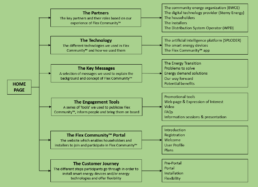
Which partners were involved in Flex Community™ ?
In order to run a flexibility project you will need to involve a mix of people and organisations. We set out the key participants and their roles based on our experience of Flex Community™ . These include:
- The community energy organisation
- The digital technology provider
- The householders
- The installers
- The Distribution System Operator.
What technology was used in Flex Community™ ?
We run through the different technologies we used in Flex Community™ and provide details of how we used them. These include:
- The artificial intelligence platform
- The smart energy devices
- The Flex Community app.
How did we explain the concept of flexibility and why it is needed?
A selection of messages we used to explain the background and concept of Flex Community™ together with examples of how we conveyed these messages.
What tools did we use to reach people and get them involved?
A series of ‘tools’ we used to publicise Flex Community™ , inform people what it was all about and bring them on board.
What is the Flex Community™ Portal and what is it used for?
Developed by Stemy Energy in collaboration with BWCE as the website which enables householders and installers to join and participate in Flex Community™ .
What steps did householders take on their journey to flexibility?
We set out the different steps householders go through in order to install smart energy devices and/or energy technologies and then offer flexibility. In Flex Community™ this ‘journey to flexibility’ is made possible by the use of the online Flex Community™ Portal.

